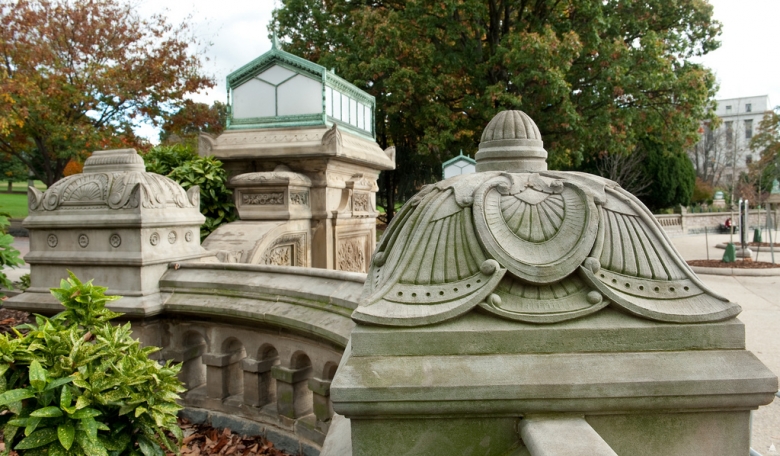
Explore Capitol Hill
Some of Frederick Law Olmsted's most significant hardscape elements can be found on the East Front plaza of the U.S. Capitol.
In 1874, Frederick Law Olmsted was charged with devising a comprehensive landscape scheme for the U.S. Capitol. Olmsted's major concern was the visual presentation of the Capitol Building and the support of its daily functions. In his submission for the Architect of the Capitol's annual report, he wrote that, "the ground is in design part of the Capitol, but in all respects subsidiary to the central structure."
Much of Olmsted's landscape legacy is architectural rather than horticultural. To distinguish these elements from plantings, modern-day landscape architects coined the term "hardscape." These elements include the low walls bordering the walks and roads and the various lamps needed for lighting the grounds at night. Some of Olmsted's significant hardscape elements can be found on the East Front plaza of the U.S. Capitol.
Recently restored and modernized as part of the building of the Capitol Visitor Center, these elements include the Olmsted fountains and lanterns, now fully modernized, and include new technologies such as the fountain's water pressure levels are tied to an anemometer that lowers the water pressure as winds rise.







